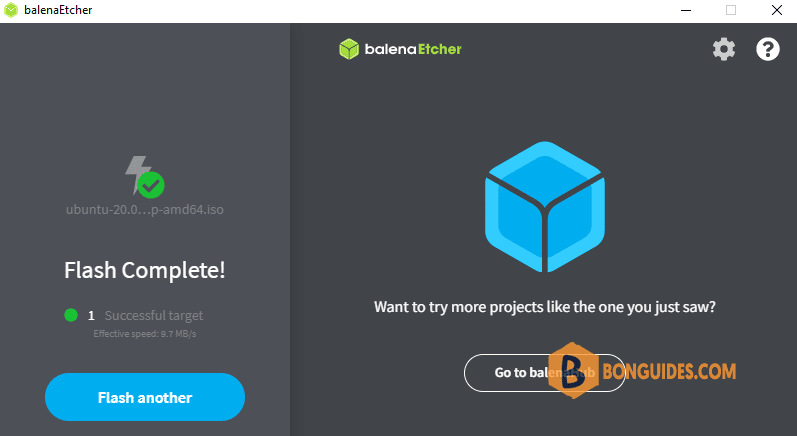Table of Contents
With a bootable Ubuntu USB stick, you can:
- Install or upgrade Ubuntu.
- Test out the Ubuntu desktop experience without touching your PC configuration.
- Boot into Ubuntu on a borrowed machine or from an internet cafe.
- Use tools installed by default on the USB stick to repair or fix a broken configuration.
This tutorial will show you how to create a bootable USB stick on Microsoft Windows using Rufus and balenaEtcher.
Requirements
- A 4GB or larger USB stick/flash drive.
- Microsoft Windows XP or later.
- Rufus or baleanEtcher, they are free and open-source USB stick writing tool.
- An Ubuntu ISO file. See Get Ubuntu for download links.
Create a bootable Ubuntu USB stick using Rufus
You just need download the portable version of Rufus instead of installed Rufus on your computer.

1. Launch Rufus, insert your USB stick. Rufus will update to set the device within the Device field then select the correct one from the device field’s drop-down menu.
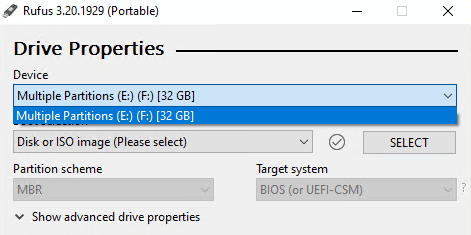
2. Select the Ubuntu ISO file you downloaded previously, click the to the right of Boot selection. then select the appropriate ISO file and click on Open.
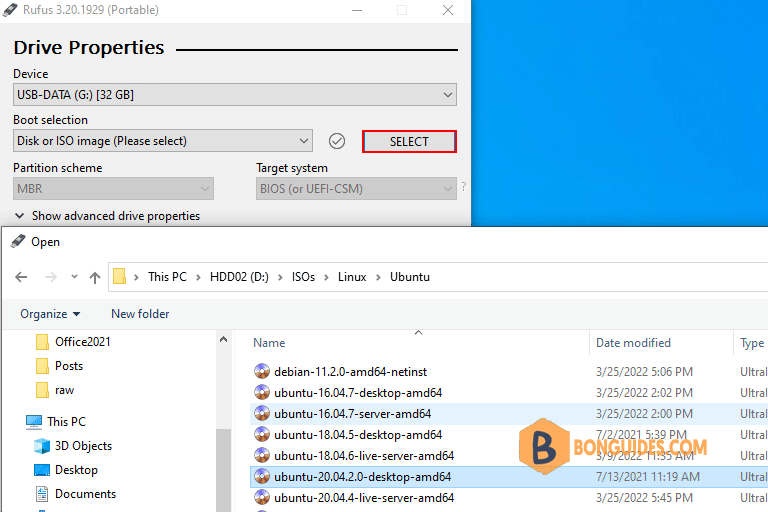
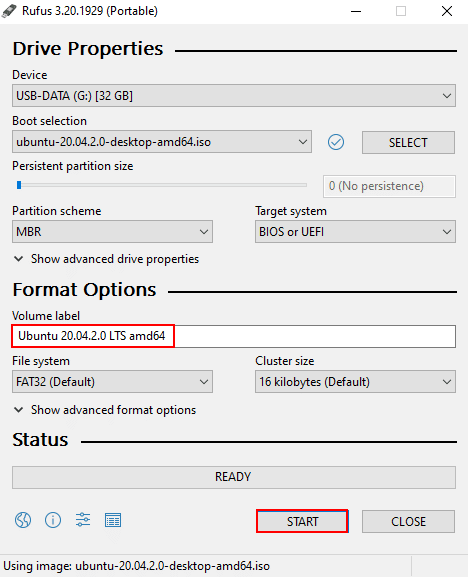
4. You will then be alerted that Rufus has detected that the Ubuntu ISO is an ISOHybrid image. This means the same image file can be used as the source for both a DVD and a USB stick without requiring conversion. Keep Write in ISO Image mode selected and click on OK to continue.
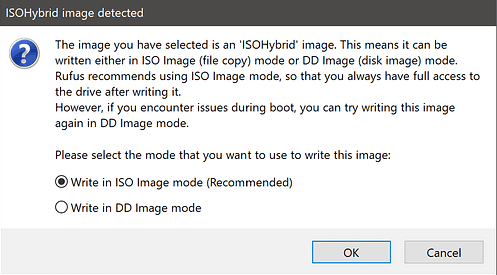
5. Rufus will also warn you that all data on your selected USB device is about to be destroyed. This is a good moment to double check you’ve selected the correct device before clicking OK when you’re confident you have.
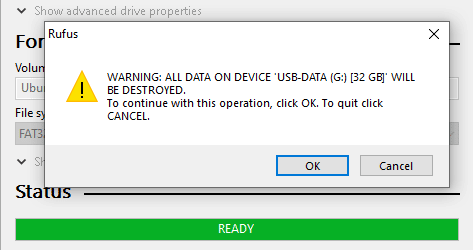
6. The ISO will now be written to your USB stick, and the progress bar in Rufus will give you some indication of where you are in the process. With a reasonably modern machine, this should take around 10 minutes. Total elapsed time is shown in the lower right corner of the Rufus window.
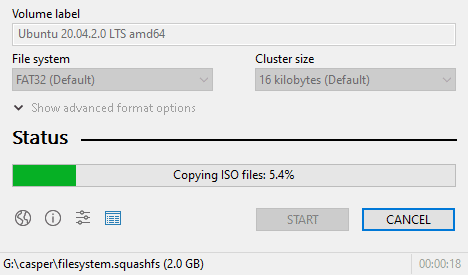
7. When Rufus has finished writing the USB device, the Status bar will be filled green and the word READY will appear in the center. Select CLOSE to complete the write process.
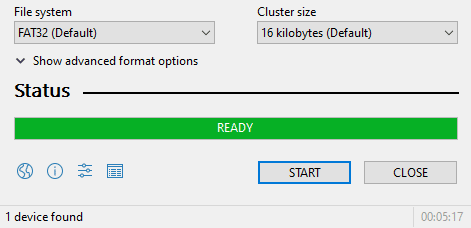
Congratulations! You now have Ubuntu on a USB stick, bootable and ready to go.
To use it you need to insert the stick into your target PC or laptop and reboot the device. It should recognize the installation media automatically during startup, but you may need to hold down a specific key (usually F12) to bring up the boot menu and choose to boot from USB.
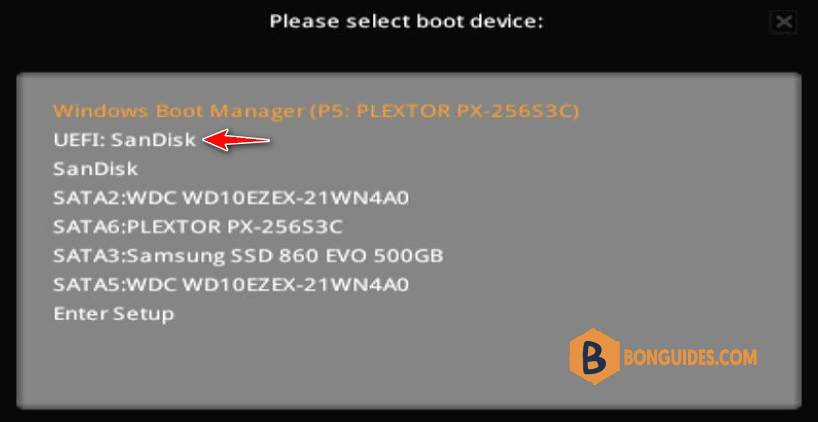
Create a bootable Ubuntu USB stick using balenaEtcher
1. Visit balenaEtcher site then download the portable version of the tool.
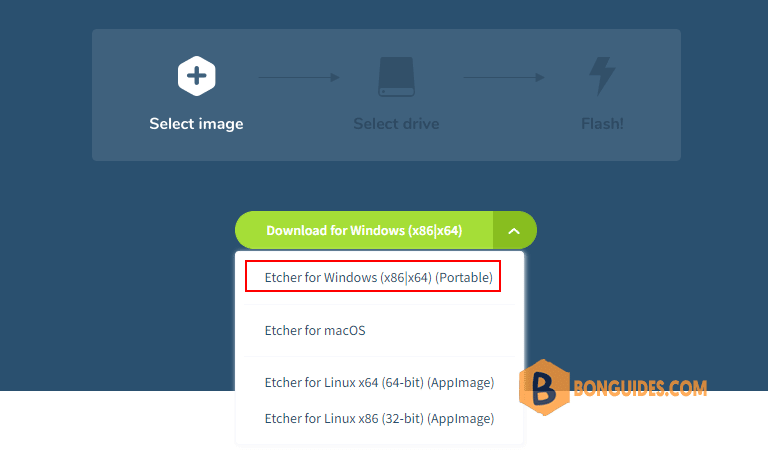
2. Open downloaded file to run balenaEtcher. First, click on the Flash from file button then select your iso of Ubuntu image.
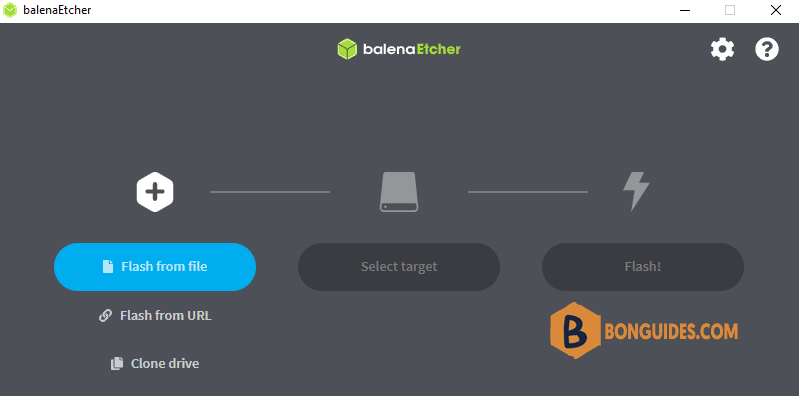
3. Next, select your USB stick to create a bootable drive.
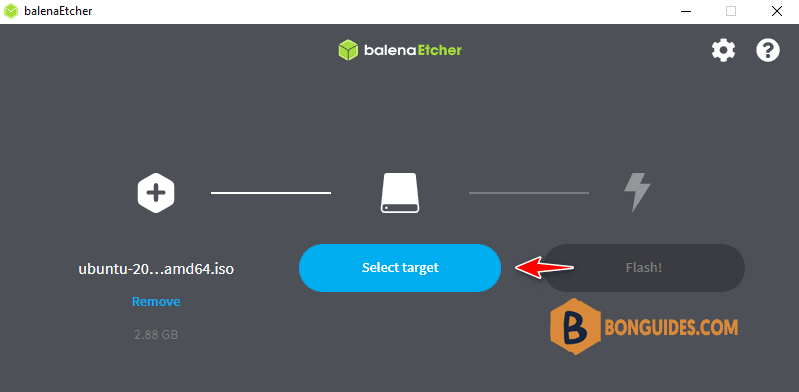
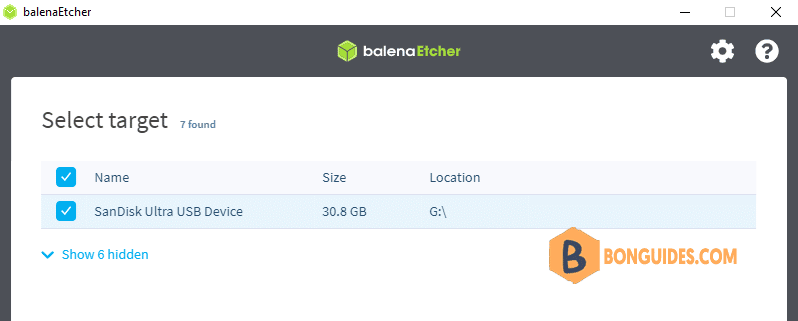

5. Creating an Ubuntu bootable USB stick, it could take several minutes to complete.
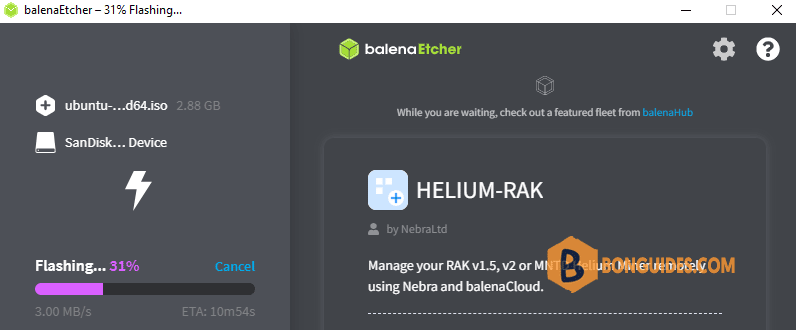
Congratulations! You now have Ubuntu on a USB stick, bootable and ready to go.
